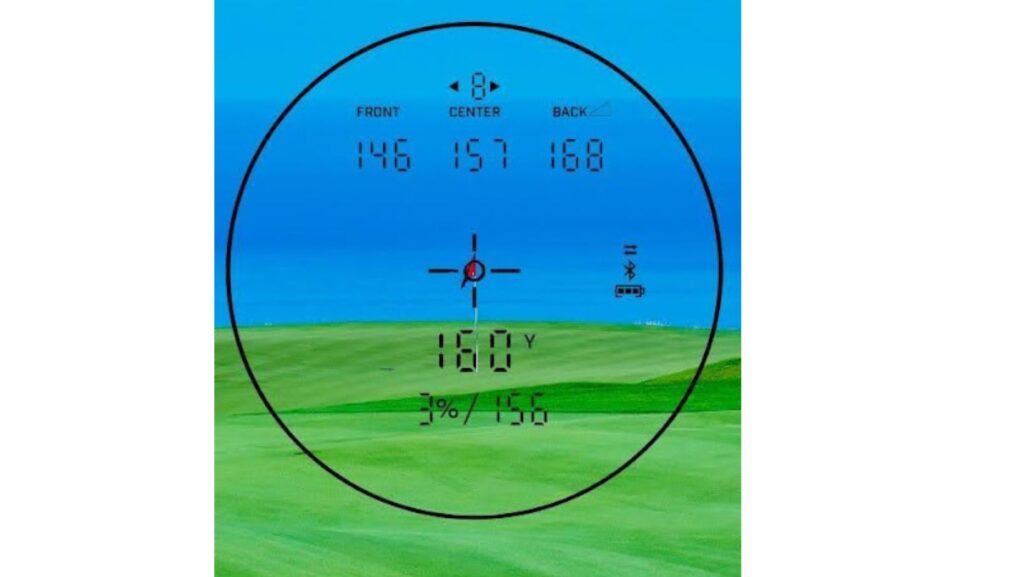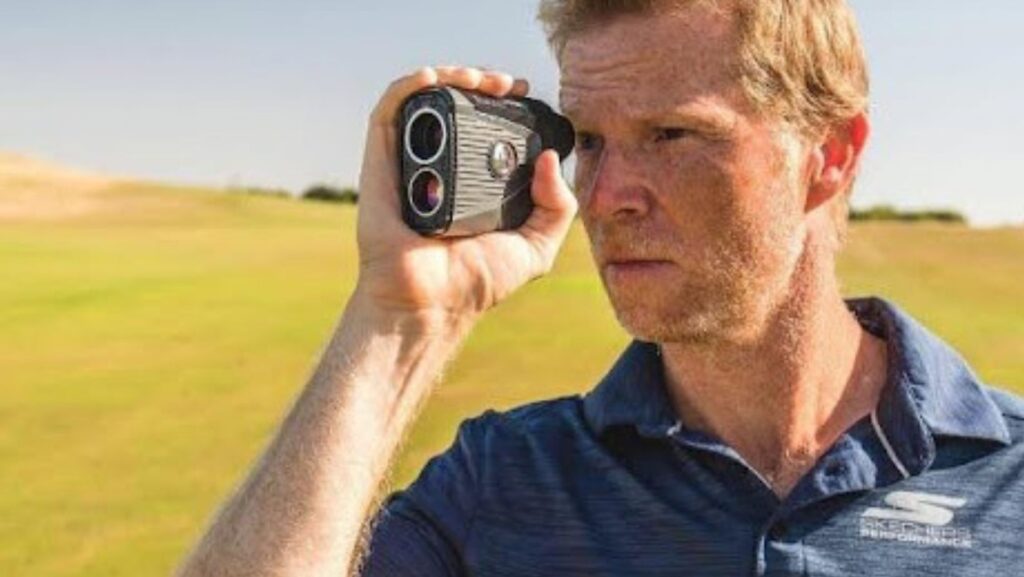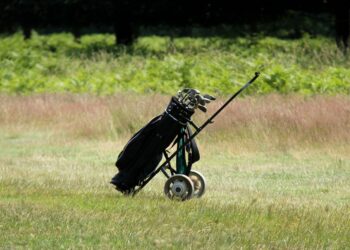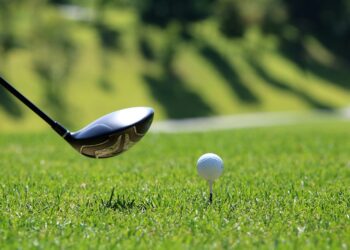The game of golf is a constant battle against variables: the wind, the lie, the break of the green, and perhaps most fundamentally, distance. For centuries, golfers relied on course markers, paced-off measurements, and sheer intuition to gauge the yardage for their next shot. This guesswork often led to frustration, with well-struck balls falling short into bunkers or flying long over the green. Today, a small, powerful device has replaced that uncertainty with near-absolute confidence. The golf rangefinder, a staple in the bags of amateurs and professionals alike, has revolutionized course management by providing precise distance data at the press of a button. The growing popularity of the sport, with 26.6 million people playing on-course golf in 2023, underscores the increasing demand for tools that enhance the experience and improve performance.

Bridging Guesswork and Guaranteed Accuracy
Whether you go for an affordable golf laser rangefinder or a premium option, they can act as a personal caddie, offering an exact measurement to any target you can see. Whether it’s the flagstick on a distant par-3, the front edge of a water hazard, or the far lip of a fairway bunker, the device eliminates the ambiguity that plagues club selection. This bridge from estimation to certainty is its core value. It transforms a question of “how far does that look?” into a definitive statement of “it’s exactly 157 yards.” This shift is not just about convenience; it’s about building a data-driven approach to every shot on the golf course.
The Promise of Precision: Why Every Yard Matters
In a game where a single yard can be the difference between a birdie putt and a tough chip from the rough, precision is paramount. Knowing the exact distance to the hole allows a golfer to commit to their swing with confidence. This accuracy directly influences club selection, encouraging players to trust their equipment and their own yardage knowledge. Over time, this consistent feedback helps golfers dial in their distances for every club in the bag, fostering a deeper understanding of their own game and leading to more strategic and successful shot-making.
The Core Mechanism: Harnessing Laser Technology for Distance
At the heart of most modern golf rangefinders is a sophisticated application of laser technology. The device doesn’t “see” distance in the way a human eye does; it calculates it with incredible speed and precision by measuring the travel time of light. This core function is the foundation upon which all other features are built, delivering the pinpoint accuracy golfers have come to rely on.
The Physics of Pulsed Laser Beams
When you press the button on a laser rangefinder, it emits a series of short, invisible, and eye-safe infrared laser pulses. This laser beam travels at the speed of light toward your chosen target—the flagstick, a tree, or the face of a bunker. Upon hitting the object, the light reflects off the surface and a portion of that reflected light travels back to the rangefinder. The device contains a highly sensitive detector that registers the returning laser pulse. An internal high-speed clock measures the total time it took for the laser beam to make this round trip, a duration measured in nanoseconds. Since the speed of light is a known constant, the rangefinder performs a simple calculation: Distance = (Speed of Light × Time of Flight) / 2. The division by two accounts for the fact that the measured time covers a two-way journey.
Anatomy of a Laser Rangefinder: Key Components
A golf rangefinder is a marvel of compact engineering, packing several critical components into a handheld unit.
- Laser Emitter (Diode): This generates the pulsed infrared laser beam.
- Receiver/Detector: A highly sensitive sensor that captures the faint reflected laser light returning from the target.
- High-Speed Timer: An internal clock that measures the time-of-flight with pinpoint precision.
- Microprocessor: The brain of the unit, which takes the time measurement and performs the distance calculation.
- Optics: A system of lenses and prisms that allows the user to magnify the view and aim the laser accurately.
- Display: An internal screen (often LCD or OLED) that presents the final distance reading to the user.
The Role of Infrared Light and Beam Profile
Golf rangefinders use Class 1 infrared lasers, which are invisible to the human eye and completely safe under all normal operating conditions. This type of light is chosen for its ability to travel efficiently through the atmosphere with minimal dispersion. The laser beam itself has a specific profile; it’s not an infinitely small point but a narrow cone that expands slightly over distance. The quality of the rangefinder’s components determines how tight this beam remains, which directly impacts its ability to isolate a small target like a flagstick from background objects like trees, ensuring the distance measured is to the correct object.

Mastering Target Acquisition: Optics and Pin-Seeking Intelligence
Simply having a laser is not enough; the golfer must be able to aim it precisely at the intended target. This is where the synergy between high-quality optics and intelligent software becomes crucial. These systems work together to ensure that the distance displayed is the one you actually need.
Visual Clarity and Magnification
The optical system within a rangefinder is as important as its laser. High-quality, multi-coated lenses reduce glare and improve light transmission, providing a bright, clear image of the course. Most golf rangefinders offer magnification, typically between 5x and 7x, which makes distant targets appear closer. This magnification is essential for aiming the laser with precision, allowing you to center the reticle directly on a flagstick that might be hundreds of yards away, distinguishing it clearly from the surrounding landscape.
The Magic of Pin-Seeking Technology
One of the most significant advancements in golf rangefinder technology is pin-seeking, or “flag-lock,” mode. This feature is designed to solve the common problem of hitting a tree or other object behind the green instead of the flagstick. When activated, the rangefinder’s software intelligently isolates the closest target within the laser’s path. It fires multiple pulses and analyzes the returning signals, prioritizing the distance reading from the nearest object it detects. The device often confirms a successful lock on the flagstick with a vibration, a visual cue in the display, or both, giving the golfer absolute certainty they have the correct yardage to the hole.
Scan Mode: Sweeping for Comprehensive Distance Data
In addition to single-target acquisition, most laser rangefinders feature a “scan mode.” By holding down the power button, the user can pan the device across the landscape, and the display will continuously update the distance to whatever the laser is hitting. This is incredibly useful for assessing the entire environment around the green. You can quickly get distances to the front edge of a bunker, the back edge of the green, and the water hazard behind it, all in a single, fluid motion, providing a complete picture for strategic shot planning.
Elevating Precision: Understanding Slope Compensation
While a direct line-of-sight distance is useful, golf is rarely played on a perfectly flat surface. Changes in elevation between the golfer and the target have a significant impact on how far the ball will actually travel. This is where slope compensation technology provides a critical advantage for more accurate club selection.
The Impact of Elevation and Slope Angle on Playing Distance
When hitting uphill, gravity works against the ball’s trajectory, causing it to fly shorter than it would on flat ground. Conversely, a downhill shot will benefit from gravity, carrying farther than a flat shot of the same raw distance. A 150-yard uphill shot might play like 160 yards, while a 150-yard downhill shot could play as short as 140. Ignoring this elevation change can easily result in being one or even two clubs off. As noted by industry analysis, slope-enabled rangefinders can improve distance accuracy by 10-15% on courses with significant elevation changes.
The Science Behind Slope Technology: Inclinometers and Algorithms
Rangefinders with slope functionality contain an additional piece of hardware: a digital inclinometer. This sensor measures the angle of inclination or declination between the rangefinder and the target in degrees. The device’s microprocessor then takes this angle and the line-of-sight distance and feeds them into a proprietary algorithm. This algorithm calculates the “slope-adjusted” or “plays-like” distance. It effectively determines the horizontal distance the shot needs to cover, providing a more accurate number to base club selection on.
Tournament Legality: Navigating USGA Rules with Slope Switch Technology
The USGA rules of golf permit the use of distance-measuring devices, but they prohibit features that gauge other conditions, such as slope or wind. To accommodate both casual play and tournament competition, many manufacturers include “Slope Switch” technology. This is a physical switch on the device’s exterior that allows the user to easily disable the slope compensation feature. When turned off, the rangefinder functions as a legal, distance-only device, making it compliant for use in official competitions.
The User Interface and Durability: Delivering Reliable Data
The most advanced technology is only useful if it’s easy to access and can withstand the rigors of the golf course. Modern rangefinders are designed with a focus on user experience, from the clarity of the display to the ergonomic feel and robust construction.
Displaying the Data: Clear and Concise Distance Readings
The way a rangefinder presents its data is critical for quick, on-course decision-making. Most devices use an in-viewer display, projecting the yardage and other information directly into your line of sight. High-end models often use bright, crisp OLED or red-accented displays that are easy to read in all light conditions, from bright sun to overcast days. The information is typically presented clearly and without clutter, showing the line-of-sight distance and, if applicable, the slope-adjusted yardage.
Built for the Course: Durability, Weather Resistance, and Power
Golf is played in a variety of conditions, and rangefinders are built to handle them. Most units feature a durable, armored housing that provides a secure grip and protects the internal components from accidental drops. Weather resistance is also a key feature, with many models being water-resistant or fully waterproof, ensuring they function reliably in rain or humid conditions. They are typically powered by long-lasting lithium batteries (like CR2 or CR123A), providing enough power for dozens of rounds of golf before needing replacement.
Ergonomics and Smart Features for On-Course Convenience
Manufacturers pay close attention to the ergonomics of rangefinders, designing them to fit comfortably in the hand for stable, one-handed operation. Beyond the core functions, many models now include smart features for added convenience. One popular feature is an integrated magnet, which allows the golfer to securely attach the device to the metal frame of a golf cart for easy access between shots.
Laser vs. GPS: Complementary Technologies for Course Management
While laser technology dominates the high-accuracy segment, another type of device, the GPS rangefinder, offers a different approach to distance measurement. Understanding the strengths of each can help a golfer choose the right tool for their game.
The Laser’s Edge in Pinpoint Accuracy to Specific Targets
The primary advantage of a laser rangefinder is its ability to provide a precise distance to any specific object you can see. It measures the exact yardage to the flagstick, not just the center of the green. This direct measurement capability is why laser rangefinders constitute the largest segment in the market. It allows for aggressive, precise play and provides invaluable data for dialing in approach shots. This technology offers an unmatched level of accuracy, with some models proving to be 99.6% accurate in testing.
GPS Rangefinders: Course Context from Satellite Mapping
GPS rangefinders, often in the form of watches or handheld units, work by using satellite signals to determine your position on a pre-mapped course. They provide distances to key fixed points, such as the front, middle, and back of the green, as well as major hazards like bunkers and water. They offer excellent at-a-glance convenience but cannot provide a distance to the specific location of the day’s hole, only to general areas of the green.
Hybrid Rangefinders: Combining Laser Precision with GPS Integration
A growing category of hybrid devices aims to offer the best of both worlds. These units combine a traditional laser for pinpoint accuracy with a GPS display that provides contextual course information. For example, the laser can give you the exact distance to the flagstick, while an integrated screen might show you a map of the green and the distance to clear a front-side bunker, offering comprehensive data for ultimate course management.
From Technology to Tee: Mastering Your Game with Rangefinder Data
Possessing precise distance data is one thing; effectively applying it to your game is another. A rangefinder is a tool that, when used correctly, can elevate every aspect of your on-course performance.
Strategic Club Selection and Distance Control
The most immediate benefit of a rangefinder is confident club selection. Knowing the exact yardage eliminates indecision, allowing you to choose the right club and commit to the shot. Over time, the consistent feedback from a rangefinder helps you build a precise understanding of how far you hit each club, which is fundamental to lowering your score. Studies have shown that rangefinders improve distance accuracy by 23% on average, directly leading to better club selection.
Enhanced Course Management and Shot Planning
A rangefinder empowers smarter course management. You can measure the distance to carry a fairway bunker, determine the ideal lay-up yardage on a par-5, or check the distance to the front of the green to ensure you avoid short-siding yourself. This ability to map out a hole and plan your shots based on precise data, rather than estimation, is a hallmark of advanced play.
The Psychological Edge: Confidence Through Certainty
One of the most underrated benefits of using a rangefinder is the psychological boost it provides. Standing over a shot with complete certainty of the distance removes a significant variable from the mental equation. This confidence allows you to focus on what matters most: executing a smooth, committed golf swing. This mental clarity often leads to better contact, improved accuracy, and ultimately, lower scores.
Conclusion: The Smart Golfer’s Technological Edge
The modern golf rangefinder is far more than a simple gadget; it is a sophisticated instrument that has fundamentally changed how the game is played. By harnessing the constant speed of light, it delivers a level of accuracy that was once unimaginable, transforming on-course strategy from an art of guesswork into a science of precision. The global golf rangefinder market’s projected growth to USD 792.67 Million by 2034 is a testament to its integral role in the modern game.
The Intricate Dance of Light, Lenses, and Logic
From the instantaneous journey of a pulsed laser beam to an internal inclinometer calculating the effects of elevation, a rangefinder performs an intricate dance of physics and computation in the palm of your hand. The integration of high-quality optics for clear targeting and intelligent software for isolating the flagstick demonstrates a remarkable fusion of technologies all aimed at one goal: providing the golfer with a single, reliable number. By understanding the technology behind that number, you can better leverage its power, turning raw data into smarter club selections, more confident swings, and a more enjoyable, successful experience on the golf course.









